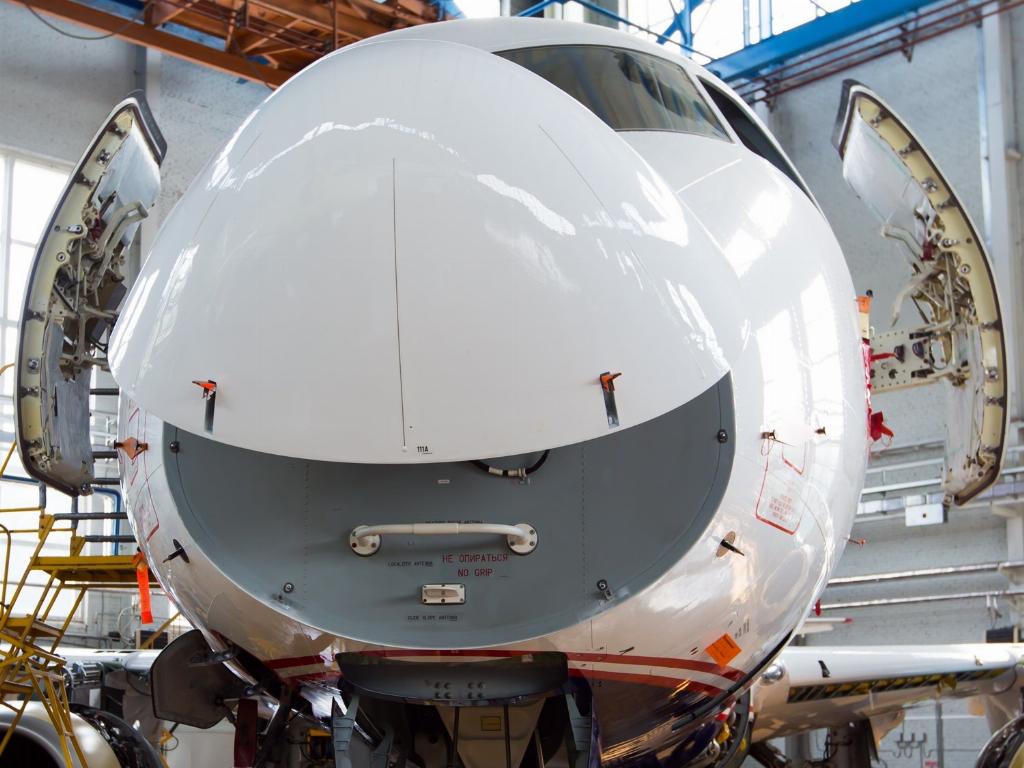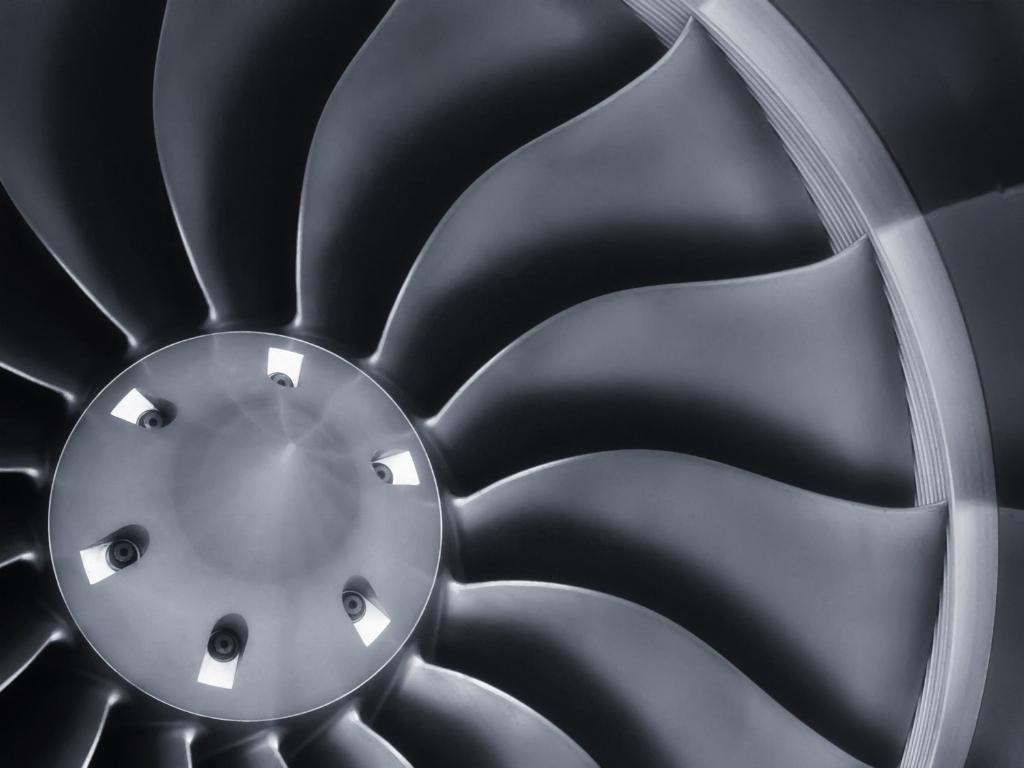Resin chemistry never stands still

Bitrez’s composites resins sales manager, Dominic Hopwood reveals how the company is rising to the challenge by developing a new generation of high temperature resin materials.
High temperature thermoset polymer materials are often used in adhesives, coatings systems and matrix resins for the aerospace, defence and space composites sectors in everything from wing and fuselage skins, to engines and landing gear. But as industry demands ever higher service temperatures, what challenges does this pose for resin manufacturers?
“Twenty-first century aerospace design demands applications go beyond conventional temperature boundaries,” begins Dominic Hopwood, composites resins’ sales manager of specialist polymers and chemicals manufacturer, Bitrez. “Today’s aerospace manufacturers expect materials to withstand sustained service temperatures in excess of 300-400°C and spikes in excess of 600-1,000°C.”
Typically, traditional chemistries have seen the average service temperatures of polymer materials in the region of 200-250°C. This is not bad, but it’s way behind reinforced ceramic and metal matrix composites which can take extreme heat, 1,000°C or more.
Although polymers lag behind when it comes to service temperatures - the temperature at which an electrical or mechanical aerospace device operates - they win by performing better under fatigue compared to brittle ceramics and they get extra points for being much lighter than most metals.
“The big question is, can resin manufacturers do better when it comes to service temperatures? Can we produce the next generation of polymer matrix composites which exceed current service temperatures, or, perhaps even, meet or out-perform the service levels of materials such as metal and ceramic?”

Material gains
Let’s take a look at what thermoset resins are currently on the market.
“The main players are phenolic resins, epoxy resins, bismaleimides, polyimides, cyanate esters, benzoxazine, phthalonitrile and thermoplastic resins. Out of these, the ones used in high temperature aerospace applications tend to be the epoxy resins, bismaleimide resins, polyimide resins, cyanate ester and phthalonitrile.”
A whistle stop tour of these thermoset resins, reveals challenges in terms of both formulation and process capacity. First up are epoxy resins, widely used in aerospace for primary and secondary structures.
“We are a specialist manufacturer of epoxy resins and can tailor them to meet our customers’ specifications, adding functionality through custom formulation. Epoxies have excellent mechanical and electrical properties with good performance retention over prolonged periods in difficult working environments. They are generally much easier to process but it’s fair to say their thermal performance can be limited and highly modified grades tend to be more expensive. However, their high-performance characteristics and endurance to mechanical and chemical attack make them extremely suitable for the manufacture of composite components subjected to long service.”
Next come bismaleimides (BMI) resins, which are used in aircraft engine inlets and flight surfaces, operating at higher temperatures. Often seen as the middle ground in terms of temperature performance, BMIs have excellent mechanical properties and low viscosity for infusion processes. However, they can be brittle and are costly relative to performance.
Then there’s polyimide (PI) resins, which are also used in aerospace components such as jet engine ducts. Providing a combination of thermal performance, mechanical strength, and chemical resistance, these resins exhibit excellent dielectric properties and a low coefficient of thermal expansion. Although they can be processed via less costly RTM, resin infusion or other out-of-autoclave techniques, they are expensive and can be brittle due to water emission during cure.
Next up is cyanate ester. Almost exclusively used in the aerospace sector, cyanate ester resins have excellent dielectric properties making them suitable for use in insulation/shielding applications such as the manufacture of radomes and antennas. They tend to have high mechanical performance, toughness and temperature service capabilities after post-curing, as well as very good performance in hot/wet conditions plus they exhibit low moisture absorption after curing. However, it has poor hydrolytic decomposition resistance and is costly.
Last but by no means least are phthalonitrile (PN) resins. Developed by the Naval Research Laboratory in the US, phthalonitrile resins when formulated into polymer matrix composites, exhibit high thermal and oxidative stability in the region of 500°C. They retain structural integrity in a fire and their limited outgassing results in void free components. However, the commercial availability of these specialist resins is limited and they have extremely high temperature post cure requirements up to 480°C.
This list reveals that whilst each thermoset resin has its own benefits, equally each has its disadvantages. And whilst the industry is moving in the right direction, it’s clear no one resin can be seen as the holy grail to address all the demands of the aerospace sector, be it resistance to high temperatures, flame retardancy, impact resistance, self-healing, lightweighting and low cost.

The ultimate resin
However, Bitrez - one of Europe’s leading developers and manufacturers of high performance synthetic resins and formulated matrix systems for the aerospace industry – may be closer than anyone to innovating the silver bullet. Established in 1983, it has developed its own thermoset resin called Curalok – a new generation of high temperature resin materials – which is now starting to be used by some of the world’s leading aerospace material suppliers.
“Curalok is suitable for the manufacture of composites with glass, kevlar, carbon fibre as well as nomex reinforcements. Process-wise it’s the same as conventional Phenolic Novolac resins. It cures rapidly at 150-190ºC and has excellent long-term thermal stability at 250°C with high mechanical strength at temperatures up to at least 300°C. It’s self-extinguishing with low smoke formation, has good ablative and radiation shielding, Class ‘C’ rated insulation properties and outstanding chemical, oil and solvent resistance. Plus, it’s more cost-effective than Polyimide resins with similar thermal performance.”
However, as Hopwood rightly says, chemistry doesn’t stand still and the challenge for resin manufacturers’ R&D departments is to design the ultimate aerospace high temperature composite resin which meets all the aforementioned demands of the sector.
“At Bitrez we are always looking to improve and innovate,” he concludes. “Our ultimate goal is to formulate a low cost, multifunctional, high temperature hybrid resin system which is non-toxic and has long-term thermal stability at elevated temperatures above 350°C. Process wise, we’d be aiming for shorter, lower temperature cycle/cure times and sustainable (biomass-based) monomer technology or perhaps biomimicry monomer technology.”
Judging by this go-get attitude, the aerospace sector might not have too long to wait before the holy grail of thermoset resins comes on the market!









